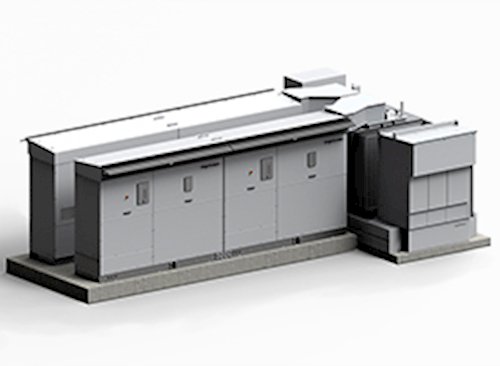Inverter stations are crucial components in the infrastructure of solar power systems, playing a vital role in converting the solar energy captured by photovoltaic (PV) panels into usable electricity. This conversion is essential because the electricity generated by solar panels is in direct current (DC) form, while the electrical grids and the majority of household and industrial appliances operate on alternating current (AC). The inverter’s job is to bridge this gap, ensuring the solar power generated is compatible with these systems. Let’s delve into the critical roles and functionalities of inverter stations in solar power conversion:

Conversion from DC to AC
The primary function of an inverter station is to convert the DC electricity produced by solar panels into AC electricity. This process is crucial because AC electricity is the standard used by electrical grids worldwide due to its efficiency in long-distance transmission. Without inverters, the energy produced by solar panels would not be usable by most appliances or for distribution across the grid.
Maximizing Solar Energy Harvest
Modern inverters are equipped with Maximum Power Point Tracking (MPPT) technology, which plays a significant role in optimizing the power output from solar panels. MPPT algorithms continuously adjust the electrical loading of the panels to ensure they operate at their maximum power point (MPP) despite variations in sunlight intensity, temperature, and other environmental factors. This optimization significantly enhances the efficiency and overall yield of solar power systems.
Grid Integration and Synchronization
For solar power to be fed into the public grid, it must match the grid’s specifications, including voltage, frequency, and phase. Inverters are responsible for ensuring that the converted AC power precisely aligns with these grid requirements. Advanced inverters also contribute to grid stability by providing reactive power support, which helps maintain voltage levels within the desired range.
Enhancing System Safety
Inverter stations incorporate several safety features to protect the solar power system and the broader electrical grid. One key feature is anti-islanding protection, which automatically disconnects the solar system from the grid in the event of a power outage. This safety mechanism prevents the system from feeding power into the grid when it is down, protecting utility workers from electrocution during maintenance and repairs.
Remote Monitoring and Diagnostics
Many modern inverters include capabilities for remote monitoring and diagnostics, allowing system operators and homeowners to track the performance of their solar power systems in real-time. This connectivity enables the early detection of issues, simplifies maintenance, and can significantly improve the system’s reliability and lifespan by ensuring that it operates optimally.
Supporting Energy Storage Integration
As the adoption of solar energy grows, so does the need for energy storage solutions to manage the variability of solar power generation. Inverter stations are integral to integrating battery storage systems with solar arrays, managing the charging and discharging of stored energy. This integration allows for the use of solar energy even when sunlight is not available, enhancing the flexibility and reliability of solar power systems.
Inverter stations are indispensable in the realm of solar energy, facilitating the conversion, optimization, and safe integration of solar power into the electrical grid. Their advanced functionalities not only ensure the efficient and reliable operation of solar power systems but also play a pivotal role in advancing the adoption and integration of renewable energy sources into our energy mix. As technology continues to evolve, the capabilities and importance of inverter stations in harnessing solar energy are set to increase even further.
